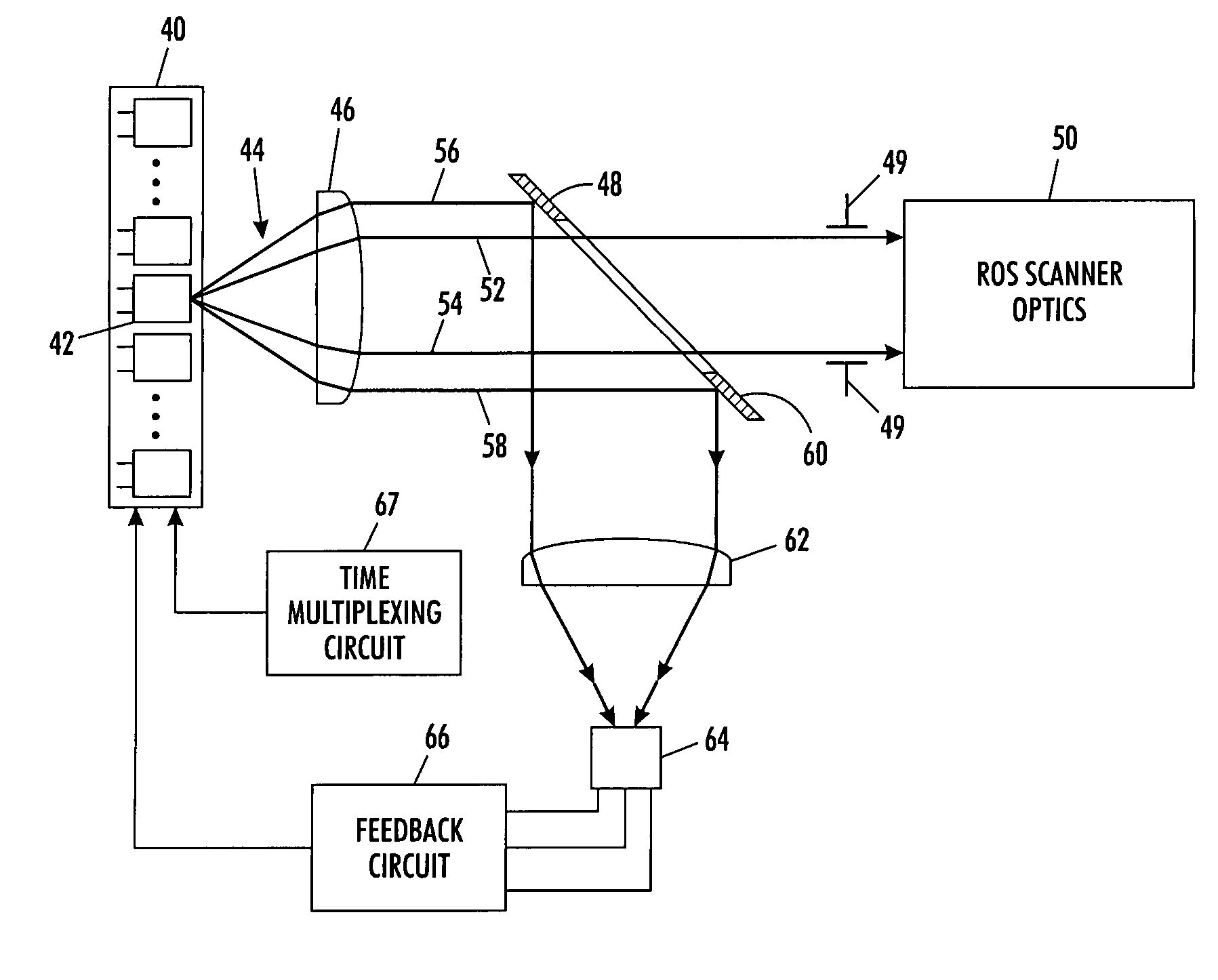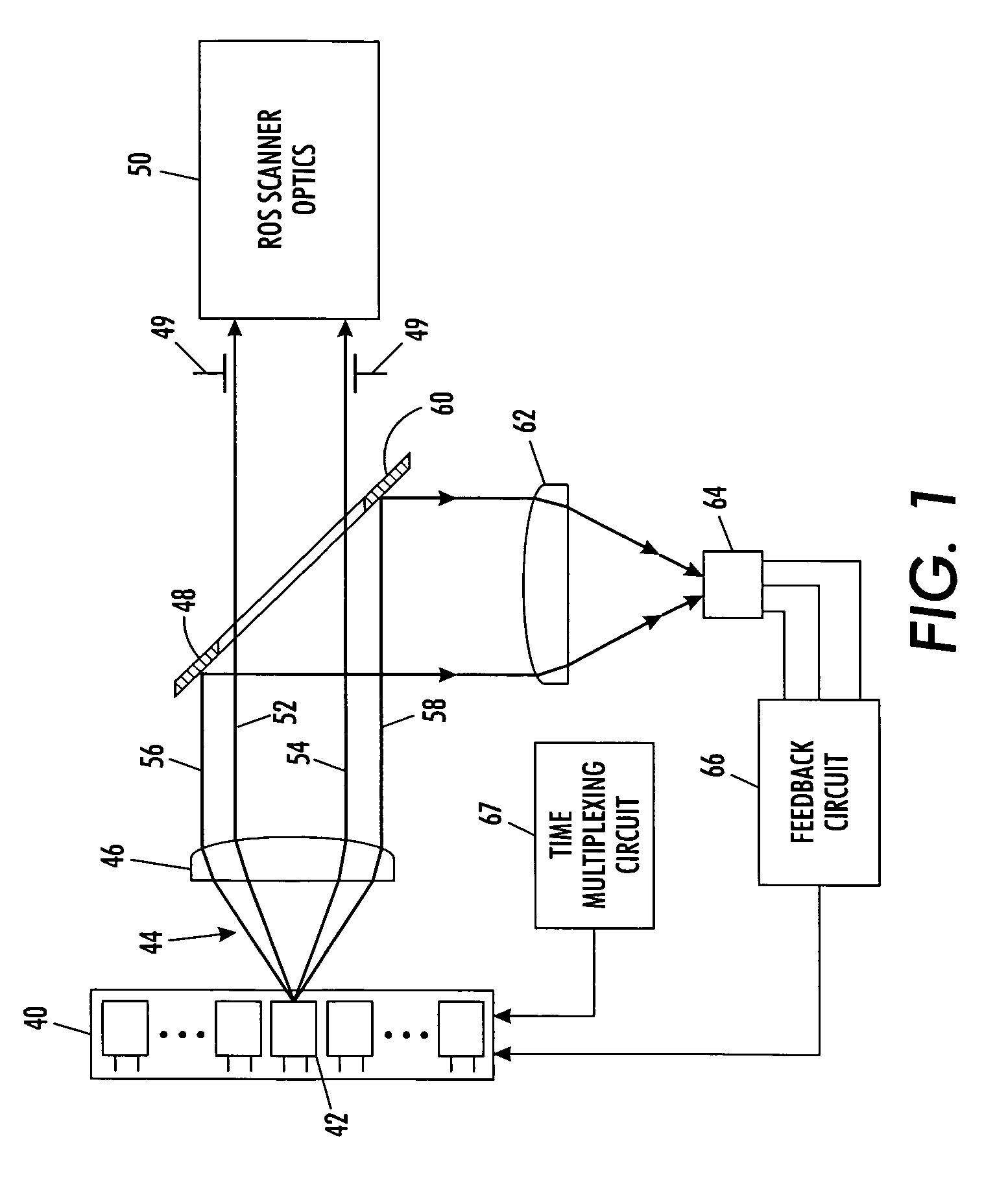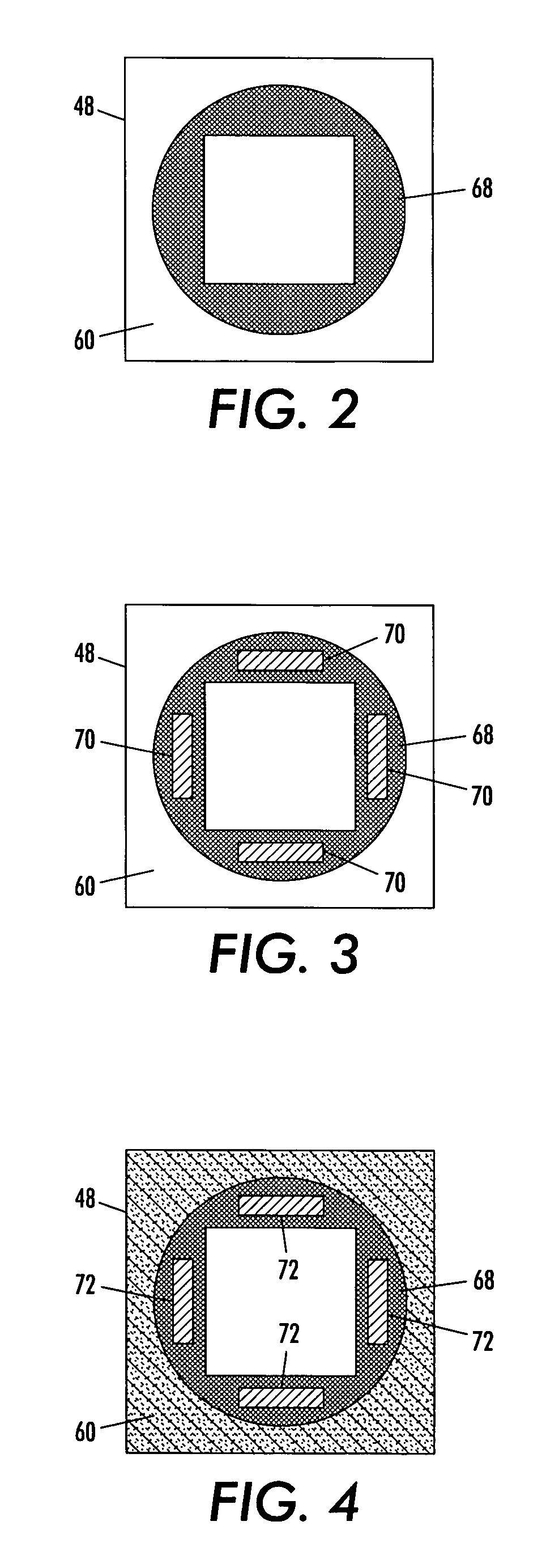Method and apparatus for monitoring and controlling laser intensity in a ROS scanning system
a laser intensity and ros scanning technology, applied in the direction of optical radiation measurement, instruments, photometry, etc., can solve the problem of not being able to take advantage of light emitted from the back fa
- Summary
- Abstract
- Description
- Claims
- Application Information
AI Technical Summary
Benefits of technology
Problems solved by technology
Method used
Image
Examples
Embodiment Construction
[0017]With reference to FIG. 1, there is shown in schematic form a raster scanning system of this application which is capable of monitoring the output power of individual VCSEL diodes. Included in the system, is a VCSEL diode array 40 having an array of VCSEL light sources 42. For the purpose of explaining the present application, however, explanation is provided with respect to only a single VCSEL light source 42, with the understanding the remaining VCSEL light sources are similarly controlled. The VCSEL array 40 is not limited with respect to shape or arrangement of diodes. In an exemplary embodiment, VCSEL array 40 includes 32 individual VCSEL light sources.
[0018]Upon receiving a driving current at its input terminals, the VCSEL light source 42 emits a light beam 44 which is collimated by collimating lens 46. Raster scanning systems typically include a limiting aperture to further define the beam 44 for use by the ROS scanner optics. For example, a limiting aperture may be used...
PUM
 Login to View More
Login to View More Abstract
Description
Claims
Application Information
 Login to View More
Login to View More - R&D
- Intellectual Property
- Life Sciences
- Materials
- Tech Scout
- Unparalleled Data Quality
- Higher Quality Content
- 60% Fewer Hallucinations
Browse by: Latest US Patents, China's latest patents, Technical Efficacy Thesaurus, Application Domain, Technology Topic, Popular Technical Reports.
© 2025 PatSnap. All rights reserved.Legal|Privacy policy|Modern Slavery Act Transparency Statement|Sitemap|About US| Contact US: help@patsnap.com



